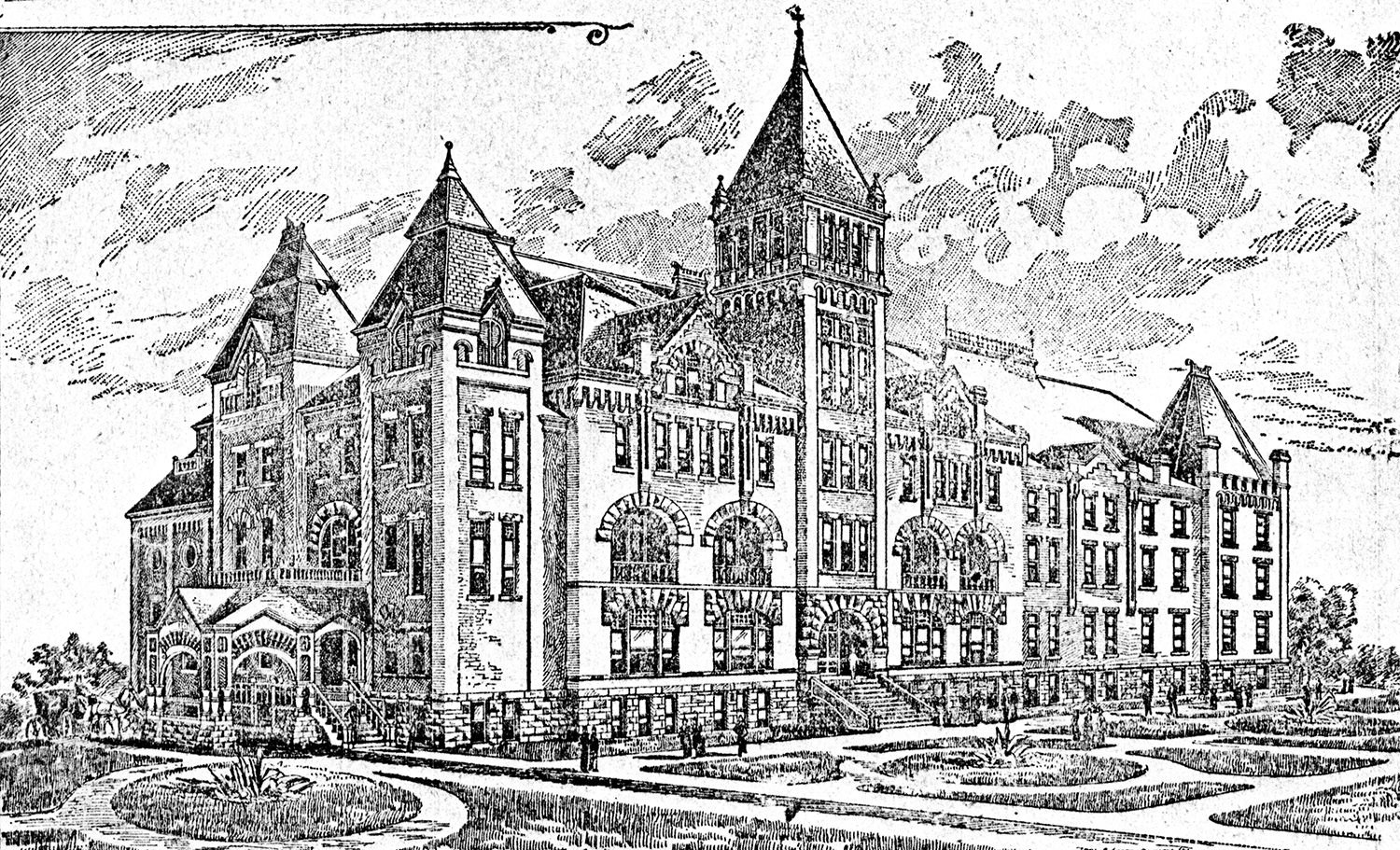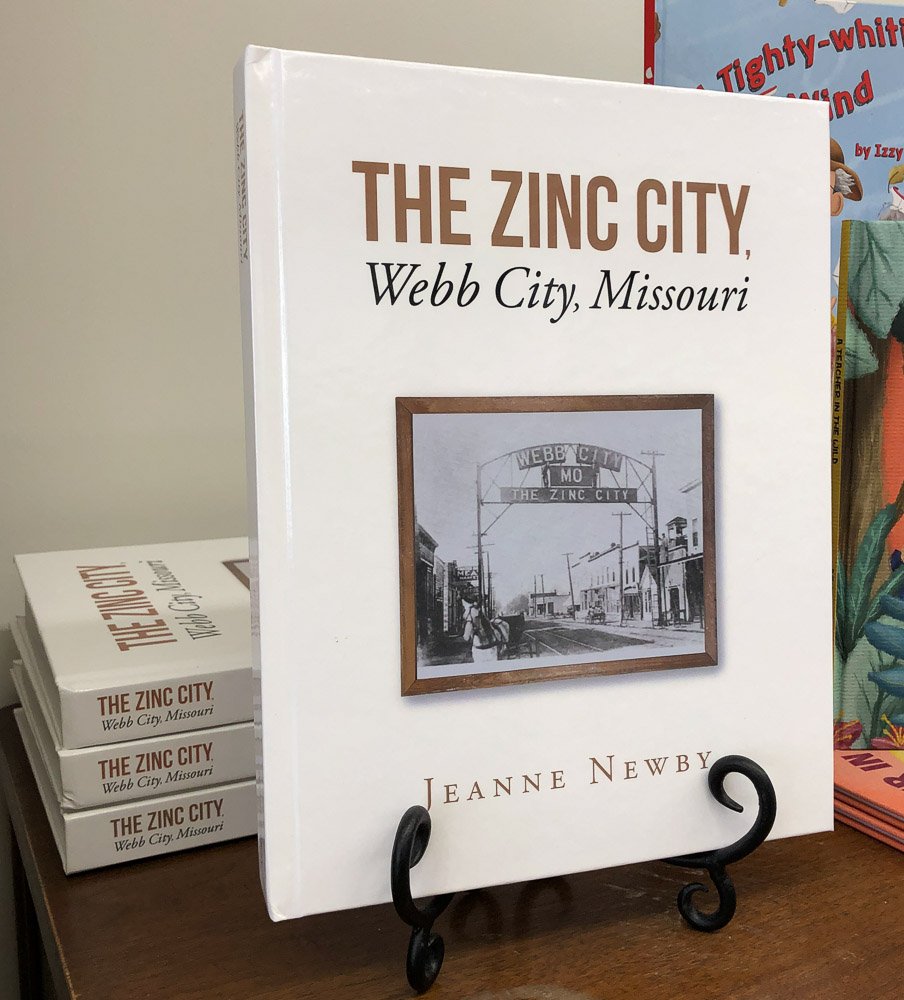

July 17, 2024
Here are a few bits of trivia from local newspapers throughout the early years.
In 1896, Webb City celebrated the opening of the brand new college at the west end of Austin Street, facing the new College Street. It was noted as “one of the grandest monuments to southwestern grit and energy within the confines of the grandest county of the state of Missouri.” It had unique architecture.
Then in 1932, a mere 36 years later, there was a celebration of the grand opening of the new hotel at the stockyards by Turkey Creek, just west of Range Line… and it was constructed with the bricks from the old Webb City college, which had been torn down.
A brick building should not have deteriorated in 36 years to the extent to warrant demolition. The college did have a rough time as different churches tried to operate the educational institute but did not hold on to it for long. It was also the home of an orphanage and then apartments. Whatever the history behind the early demolition of a grand building, its fame continued after demolition as the basement became the city swimming pool in Hatten Park, which left many memories in the hearts of the citizens.
¶
Speaking of the name Hatten, in 1916 while breaking ground for A.D. Hatten’s new home, out in the “country” at 600 S. Ball St., the construction workers uncovered two petrified ears of corn with kernels still intact. Hatten determined the artifacts to be several thousand years old, and the Sentinel headline of the discovery stated they were 5,000 years old. Hatten laughingly dubbed Webb City as Noah’s Cornfield. They also uncovered fossils of starfish, shells, lizards, toads, and the age old trail of a serpent that could plainly be followed in its windings round and round in and among the solid rock. Hatten kept the petrified corn in his Home Land & Loan office, at 108 N. Main St., for citizens to view his find. He later donated his corn and mineral collection to the Mineral Museum in Joplin.
¶
Once again Hatten was in the news on Oct. 5, 1930, when the city dedicated its new stadium, Hatten Field, on Madison Street, just north of Crow Street, as football fans watched a game between Pittsburg (Kan.) High School and Webb City High School.
The event was celebrated with a parade down Main Street. The drum corps opened the ceremony on the field. The Webb City Municipal Band played the “Star Spangled Banner,” followed by a short concert. In his dedication speech, Ray E. Watson stated, “This stadium should not be dedicated for victory, for victory does not always mean the highest scores. We shall dedicate this stadium and field to the good citizenship and the future citizens of Webb City, trained in our schools, and this is being done in the name of good sportsmanship.”
The stadium had an 8-foot-high rock and concrete wall, built by the Works Progress Administration, that went around the entire field. The grandstand had a seating capacity of 2,500. It was 200 feet long, 40-feet wide and 20-feet high.
¶
In 1919, as an Armistice Day observance, 78 trees were planted on the east side of Schifferdecker Park in Joplin as a memorial to those who gave their life in World War I. Maps were shared with relatives to give the location of each tree planted and named in memory of each soldier.
Webb City had a similar dedication with trees planted along Powell Drive in memory of fallen soldiers from World War II. At that time, Powell Drive was known as Broadway Road, a spur off of Broadway Street, but the name was changed in honor of Robert Powell, the first Webb City soldier killed in action in Vietnam, on June 10, 1966.
¶
In 1882, the community now known as Prosperity was named Troup City. When a request for a post office was issued in 1892, they had to change the name, and the thriving mining community was changed to Prosperity.
On Aug. 7, 1912, the main section of Prosperity was destroyed by fire. The most disastrous fire in the history of Prosperity resulted in eight buildings being destroyed.
One of Prosperity’s claims to fame occurred in 1906 when a Webb City man, J.B. Gibson, was sinking a 30-foot shaft and uncovered a large jaw bone of a prehistoric animal with two teeth measuring 2 inches across. (I don’t know what ever came of that jaw bone!)
¶
In 1904, due to the cold snap in January, the price of eggs skyrocketed from 19 cents a dozen wholesale to 30 cents. The newspaper commented, “Cold weather is always a signal for high prices in eggs. The hen keeps right on laying in cold weather, but the farmer does not bring them to market due to bad weather and that causes the rise in prices.”
¶
George Ball came to Webb City in the early days of mining. He was a young man with no shoes, one pair of pants full of holes and empty pockets. He received a break in the mining business and with his ingenuity managed to accumulate approximately $4 million in his estate. When he passed away in 1928, he did not leave a will, and the money was divided among the children and grandchildren, leaving Mrs. Ball in a rough financial state.
¶
In 1922, during the Prohibition Days, officers were kind of impressed when they raided a farm just across the state line into Kansas and discovered a whiskey still hidden in a hearse. There were fresh jugs of whiskey, which had been distilled only moments before the officers arrived on the scene. The still was in a horse-driven hearse for ready removal should the revenuers arrive. But not ready enough as the revenuers made their surprise visit. Most admitted this was one of the most unique stills they had ever uncovered.
¶
In 1921, a farmer in Jasper County purchased some farm land and found that his well was a bit too far from the house so he decided to drill a new well. The water witch was brought out and a spot was located about 15 feet from the back door and the drilling began. Instead of finding cool, clear water, they struck a rich vein of lead. The farmer lost interest in finding water and seemed content with his pursuit of lead.

